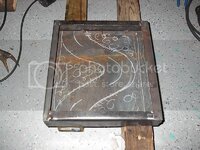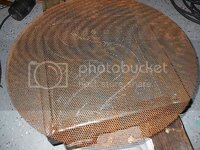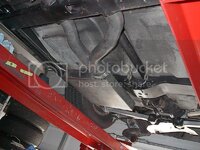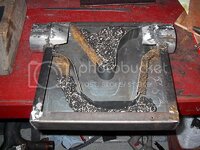69427
The Artist formerly known as Turbo84
Well, I managed to get a few of the main projects done so far this winter, and the next ones are the aluminum radiator support and the new muffler (singular). It seems to me one big muffler ought to weigh less than two medium size mufflers, so I thought I'd give it a try. My exhaust system has about a three foot "X-pipe" running under the passenger seat, and this is where I was going to place the muffler. Current configuration:
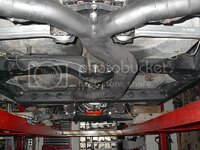
I'm going to cut a section out and install the new muffler there. I made some measurements to see what will fit, and then got some sheetmetal bent up at a friend's welding shop. Here's the main body of the muffler:

I'm going to start cutting some end pieces and a top cover this week. Initially I am going to make the cover removable as I expect to be making some tweaks to the internal baffling and routing depending on noise levels and backpressure readings (I'll have an O2 sensor fitting just upstream of the muffler, and can use this fitting to screw in a pressure gauge line.)
My goal is to reduce the total exhaust system weight, and also be able to place that (muffler) weight where I want it, just in front of the right rear tire.
I've got a few ideas on the internal construction, consisting of some surge volume and sound dampening material. I want this muffler to flow well, but I don't want something that sounds like a big tin can.

I'm going to cut a section out and install the new muffler there. I made some measurements to see what will fit, and then got some sheetmetal bent up at a friend's welding shop. Here's the main body of the muffler:

I'm going to start cutting some end pieces and a top cover this week. Initially I am going to make the cover removable as I expect to be making some tweaks to the internal baffling and routing depending on noise levels and backpressure readings (I'll have an O2 sensor fitting just upstream of the muffler, and can use this fitting to screw in a pressure gauge line.)
My goal is to reduce the total exhaust system weight, and also be able to place that (muffler) weight where I want it, just in front of the right rear tire.
I've got a few ideas on the internal construction, consisting of some surge volume and sound dampening material. I want this muffler to flow well, but I don't want something that sounds like a big tin can.

